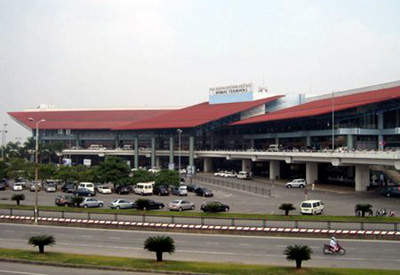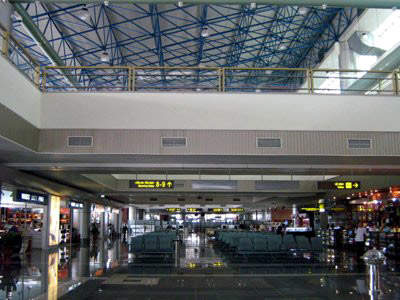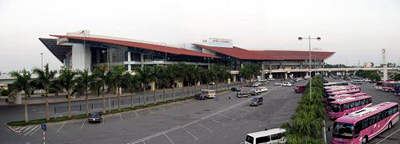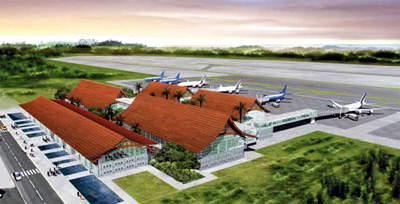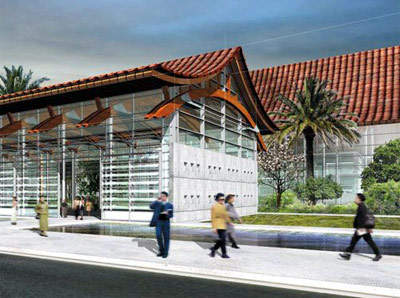Noi Bai International Airport, situated about 28 miles (45km) north of Hanoi, has a chequered history having been first built as a military airbase, which saw service during the Vietnam war as an airbase for the Vietnamese air force. With the war over and the country reunified in 1975, the airport was refurbished and became an international airport for commercial traffic (although still retaining some function as a military air base).
In 1995, the Prime Minister officially decided to build the first international terminal at Noi Bai. Terminal one began operation in October 2001 with a total ground area of 90,000m².
It was equipped with modern technical systems and able to serve 4,000 customers an hour during rush periods with a capacity of 6.5 million passengers a year.
The airport is administered by the Northern Airports Authority, which charges passengers a departure tax to offset airport costs. This relatively modern airport has two parallel 3,800m (12,466ft) concrete paved runways designated 11L/29R and 11R/29L.
In 2010, the airport received approximately 9.5 million passengers. As one of the highlights of Vietnamese aviation, Noi Bai received the superjumbo A380 in September 2007.
Noi Bai expansion and masterplan
In 2006 the Vietnamese Government approved a $236m project to build a new terminal (T2) for Noi Bai Airport. The Civil Aviation Administration of Viet Nam (CAAV) will administer the project and maintain the correct international standards in conjunction with the ICAO (International Civil Aviation authority).
The Japan External Trade Organisation (JETRO) discussed the Noi Bai Airport master plan and T2 passenger terminal feasibility study with CAAV and the Northern Airports Authority. Consensus so far is that the airport should be developed in several phases to cope with changing technology and market needs.
Currently, the airport can handle 9.5 million passengers annually. In the medium-phase the capacity should be expanded to 12 million passengers a year, to be further increased to 20 million by 2020.
Noi Bai Airport has a capacity to handle a maximum of 50 million passengers a year and has area for an additional parallel runway in the south if required.
According to the JETRO study team, immediate development at the airport should focus on the construction of T2, which is to be an international four-storey terminal with a total floor area of 90,000m².
Noi Bai Terminal Two
T2 has already been designed to provide high-quality services, smooth passenger flow, future scope for expansion, and enhanced security, guaranteeing commercial success. Three designs for the terminal were considered.
T2 construction is scheduled to begin by the third quarter of 2011, with completion slated for 2014. At this time the existing T1 terminal will be modified to become a domestic passenger terminal. The JETRO study team has also provided the modification plan for T1. The project is estimated to cost about $804m and be funded by Japanese Government ODA (Official Development Assistance). The project will also include aircraft parking zones, elevated roads and a multi-storey car park.
A feasibility study for the Airport Rail Link (ARL) was also conducted. An ARL is necessary as the Thang Long Expressway would not be able to handle the increased traffic after 2010.
Additional facilities
By the end of 2007, Noi Bai Airport was installed with an automatic luggage processing system and four passenger bridges, worth $26m, in the original T1 building.
The airport has also recently constructed a new Air Traffic Control tower (ATC). The new ATC is located on a 4,500m² site inside the airport development area.
Vietnam Airlines invested the finance for the ATC, which was designed by the French company ADPi in conjunction with Archetype of Vietnam consulting on the technical design. The project produced an 88m ATC along with a four-storey technical building with a basement. The tower is 10m in diameter and is fully glass clad.

